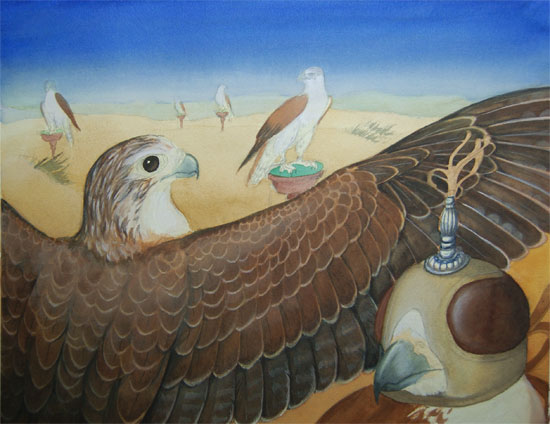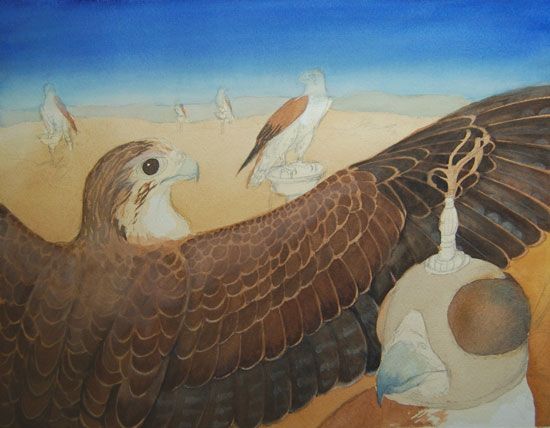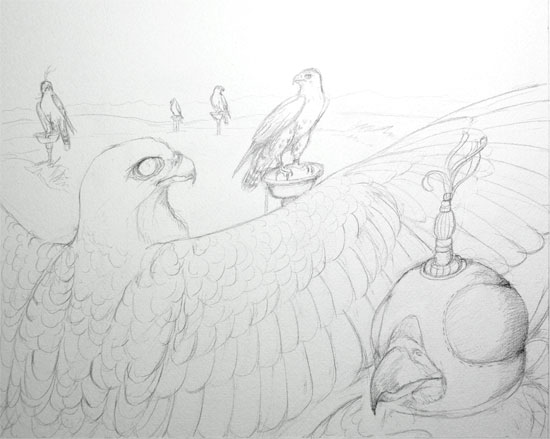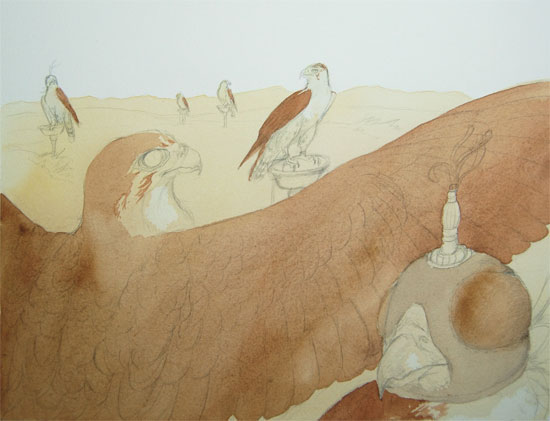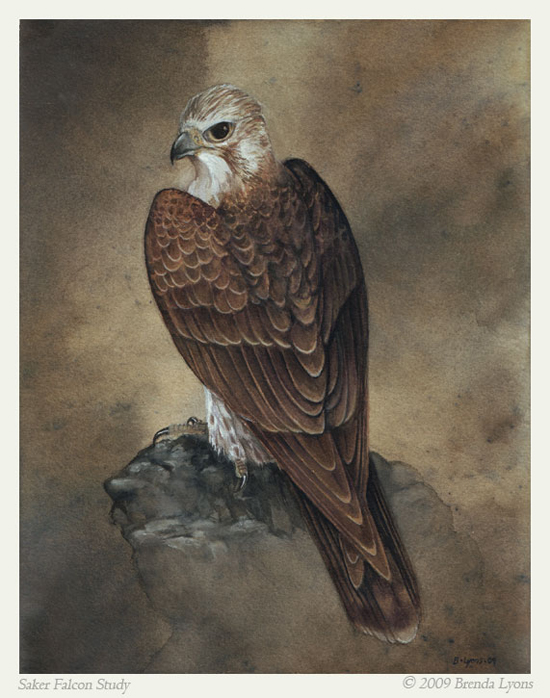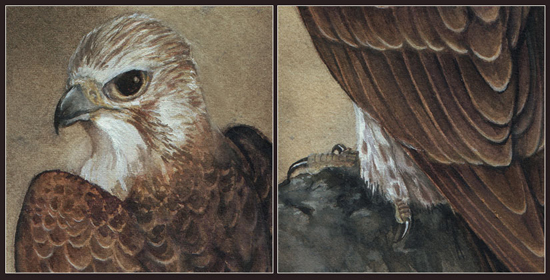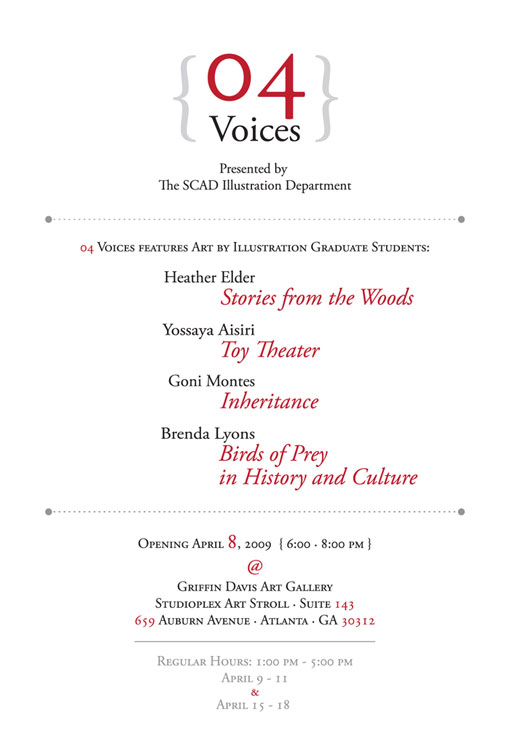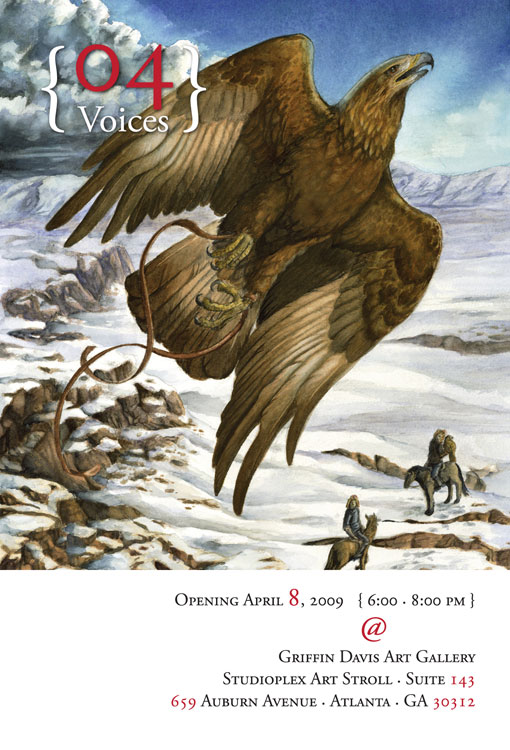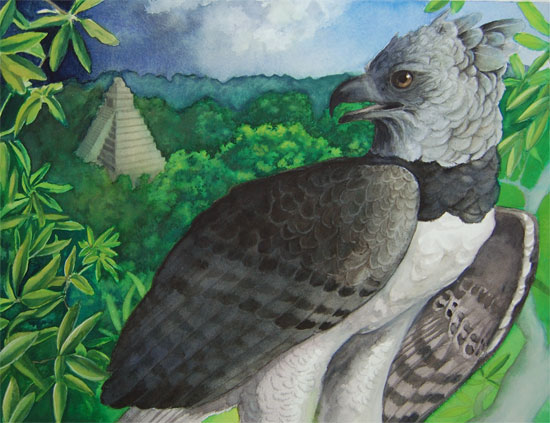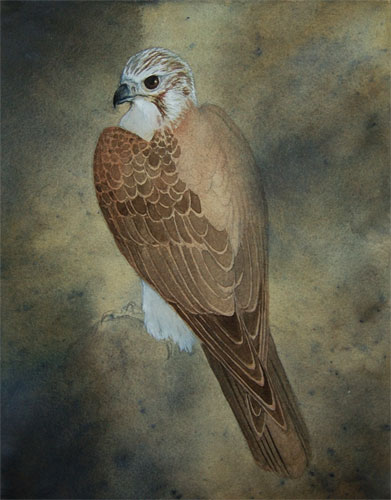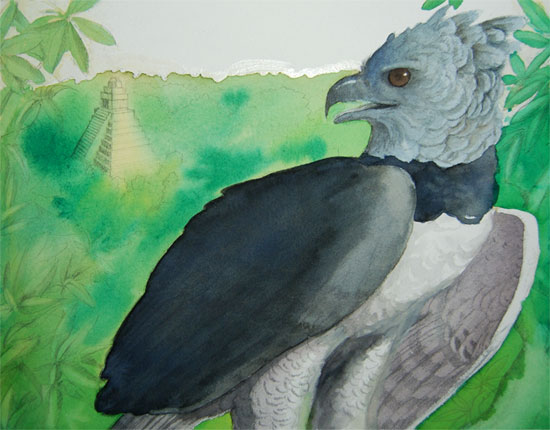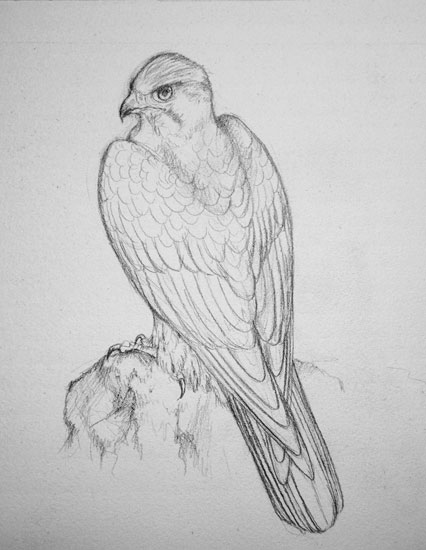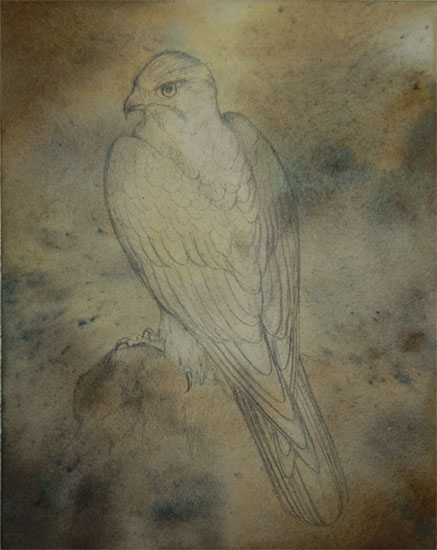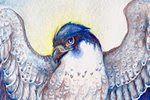Now that the barn owl is finished, I've gone full speed ahead on my next thesis painting, which is the harpy eagle. Harpy eagles throughout time have been seen as birds of power in Central and South America. Even today, the Baniwa People in the Northwest Amazon forests recognize Kamathawa, a harpy eagle deity.
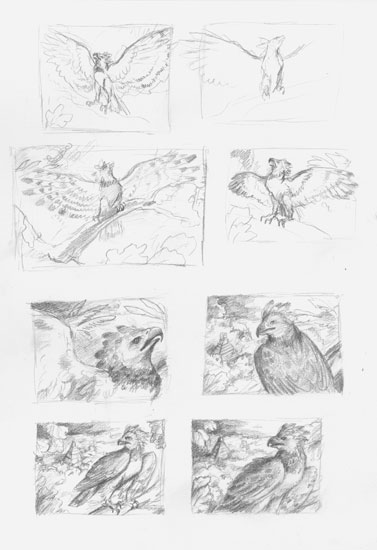
Here are my initial thumbnails. You can see the rather boring compositions at the top that always come out until my brain gets warmed up and starts coming up with something better.
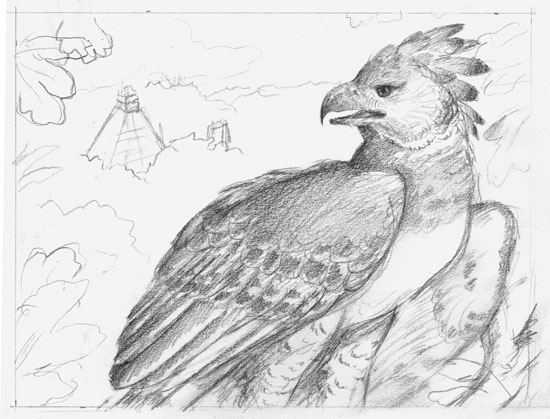
I decided on the bottom right sketch (of course it would be the last thumbnail I do! Just proof that you can never always go with your first idea), and fixed it up. After studying photos of harpy eagles a bit more, I came to realize that due to their rounded wings (similar to those of an accipiter, required as they hunt through dense forest), you don't see the primaries poking out from under the secondaries. It does look a bit strange at first, but it makes sense - harpy eagles don't have the long 'fingertips' of other eagles. Harpies also have a bit of a protrusion above their eye, just as accipiters do to protect their eyes from branches and leaves as they zoom through dense trees.
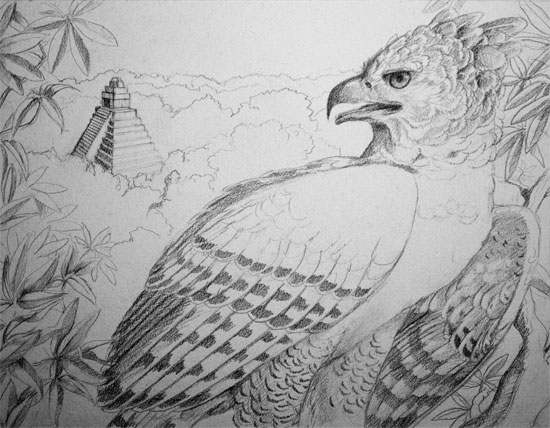
The final graphite drawing on my stretched watercolor paper. I try to only put in important shading and markings (such as bars on the feathers) with graphite, and do the rest with watercolor. I fixed a few more anatomical bits. One of the wonderful advantages of doing three sets of drawings (thumbnails, final sketch, final drawing), is that you have three points at which to check your anatomy!
The branch the eagle is standing on is that of the Kapok, which was sacred to Mayans. In the middle ground you can also see one of the Tikal Towers in Guatemala. Harpy eagles are often seen in this area, and I wanted to connect both the ancient beliefs (Mayan) with present beliefs (Baniwa). Although these two groups of people did not live in exactly the same region, there are parallels between their cultures, and the harpy is a bird who ranges between Central and northern South America.
The sky on the left side will be heavy with rainclouds, where the sky on the right will be clear and blue. Sunlight will be streaming in from in front of the eagle, as one of the Baniwa beliefs is that the harpy eagle brings summer:
"Feathers obtained from Kamathawa aid the shaman in his ritual to clear the sky of clouds and make the summer come." --- Robin M. Wright,
Guardians of the Cosmos: Baniwa Shamans and Prophets, Part I
